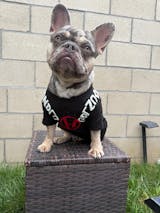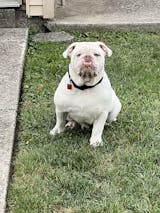Does Diet Cause Tear Stains on Dogs?
For those of us who take pride in looking after our dogs, tears stains can be the bane of our life. Though our dog’s coat might be glossy and their overall health superb, those unsightly tear stains on our dogs persist. We can wipe the tear stains away, but they keep coming back.
There are many causes of tear stains on dogs, from infection to anatomy, and even a dog’s genetics. However, there is one key factor that plays a massive role in a dog’s life that owners can often overlook: their diet!
This article examines whether diet can be the cause of tear stains on dogs and what changes you can make to reduce or eliminate tear stains on your dog. We will also look at the best product on the market for removing tear stains on dogs.

Can a Dog’s Diet Cause Tear Stains?
In short: yes.
First, what do we mean by tear stains on dogs? These are the dark brown or reddish marks that appear under a dog’s eyes, going from the inner corners and down the contours of their face. The stains are caused by the build-up of a pigment called porphyrin. But their coloration can also come from a yeast infection.
Most often tear stains on dogs appear due to excessive production of tears or the inability to drain tears adequately. This is known as epiphora.
Stress and lifestyle, including diet, are well-known causes of epiphora. But tear stains on dogs can also be caused by an allergy to certain foods, or through the use of plastic bowls for feeding and drinking water.
Which Foods Can Cause Tear Stains on Dogs?
The most common cause of food allergies in dogs is the use of dog foods containing low-quality grains, fillers, and artificial ingredients.
- Fillers: To bulk out their products, many low-quality dog foods use corn and wheat as fillers. These products can cause allergic reactions which can lead to excessive tearing, i.e. epiphora. Or, they can upset the dog’s stomach, which in turn can lead to tearing.
- Artificial colors and flavoring: These chemicals can cause allergic reactions. As a general rule, the more artificial additions to a product, the more likely problems such as tear stains on your dog are to occur.
- Preservatives: To give their product a longer shelf-life, many companies use preservatives. However, these preservatives can cause an allergic reaction, which, like fillers, leads to excess tearing.
How to Tell if Diet is the Cause of Your Dog’s Tear Stains:
The first step is to eliminate dog food that contains any fillers, artificial colors, or preservatives and switch to a high-quality, all-natural dog food. High-quality dog-foods are less likely to contain artificial chemicals, coloring, and fillers and are better for your dog’s overall health, as well as reduce the likelihood of food allergies and stomach issues for dogs.
If your dog still shows signs of a food allergy after changing their food, consider what else you feed your dog. Many owners often forget about dog treats; however, the tasty treats you give your pooch for a reward could be the very thing causing tear stains on your dog. Look for natural dog treats that do not contain grains or artificial preservatives and flavoring. Luckily, there are a variety of brands of natural dog food and treats available on the market these days.
For more information, check out our blog post, “Clean Your Dog's Tear Stains Naturally.”
Persistent Tear Stains on Dogs:
If you’ve gone through your dog’s entire diet, changed their water, and even switched from a plastic bowl to a metal or ceramic alternative, yet tear stains persist on your dog, it is time to consider another cause.
As we mentioned at the start, there are many causes of persistent tear staining in dogs, including:
- Ingrown eyelashes
- Eye infections
- Large tear glands
- Brachycephalic syndrome
- Ear infection
- Medications
- Secondhand smoke, and more…
Born This Way:
It is also possible that your dog’s tear stains are just a natural quirk of your pooch and no change in diet or lifestyle will eliminate their persistent tear stains-- in which case, you’ll need the best tear stain remover on the market that is also safe to use regularly on your dog. For dogs prone to constant tear stains under their eyes, owners need an all-natural, easy-to-apply tear stain remover they can trust.
Tear Stain Removers:
There are dozens of products on the market targeted at removing tear stains on dogs. However, if you don’t pay attention to the ingredients, you could end up applying a product that’s chock-full of chemicals on your beloved dog. Sometimes you can even do more harm than good.
Frustrated at the lack of natural ingredients in tear stain removers, we set out to make a product with a difference:

Our paste is specifically designed to clean away and prevent tear stains on dogs. Squishface Wrinkle Paste is made with hypoallergenic plant-based ingredients such as coconut oil, that will also soothe your dog’s underlying skin. Tear stains on dogs are also known to increase the risk of eye infection. That’s why we included natural zinc in Squishface Wrinkle Paste. It acts as a water-repellent barrier, preventing moisture from gathering. Fungi and bacteria will never even get a foothold.
Use Squishface Wrinkle Paste on your dog every day for a minimum of 7 to 10 days for. To apply, work the paste deep into your dog’s fur, rubbing vigorously. While many dog owners often see results after a few days of consistent, daily use, recommended use is a minimum of 7-10 days of daily use for maximum benefit.
The Bottom Line
Regardless if your dog’s tear stains are caused by diet or genetic predisposition, you’ll need the best tear stain remover products to get rid of those tear stains. Squishface Wrinkle Paste and our handy Squishface Wrinkle Wipes are safe and effective products for addressing tear stains on dogs, so be sure to get your dog some today!
Be sure to follow us on TikTok, Instagram, Facebook, Pinterest, YouTube, and visit our blog weekly for more tips on caring for your adored doggo, and the latest on all things Squishface!










